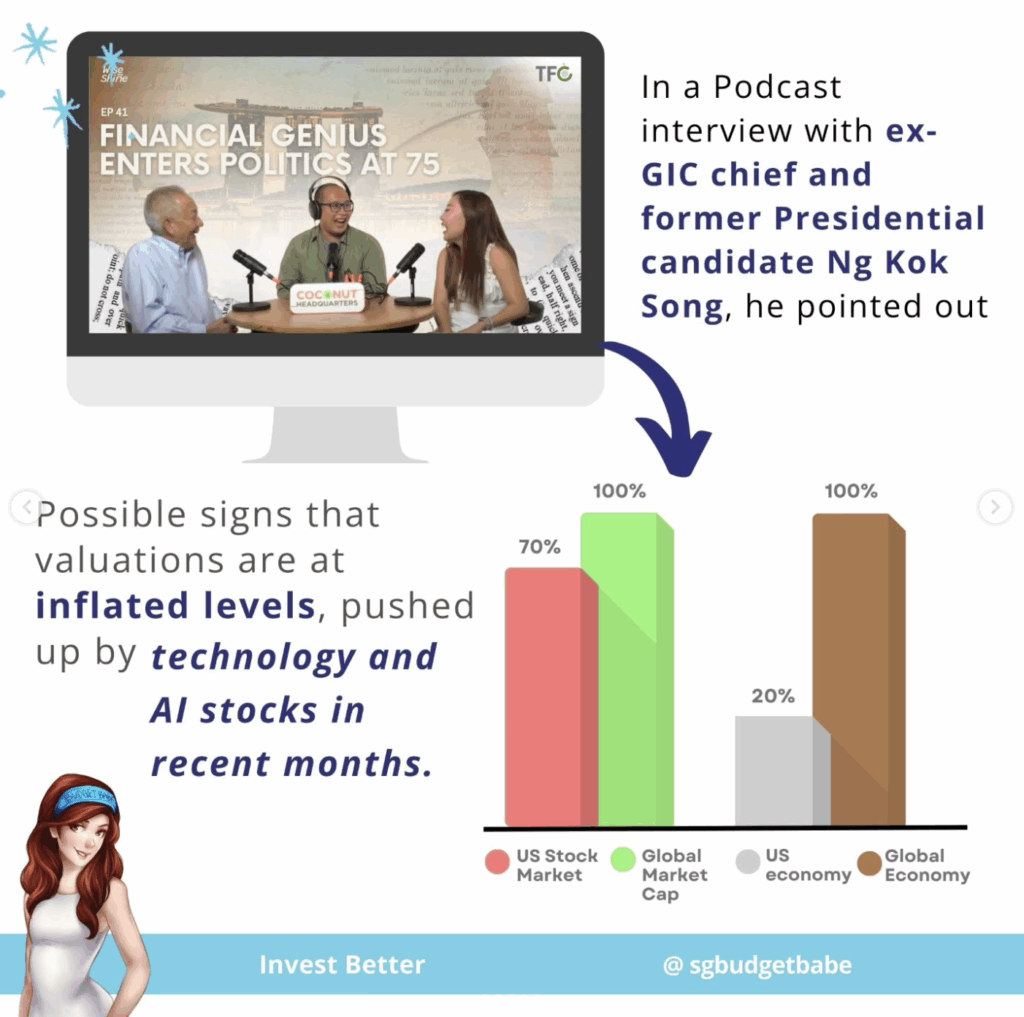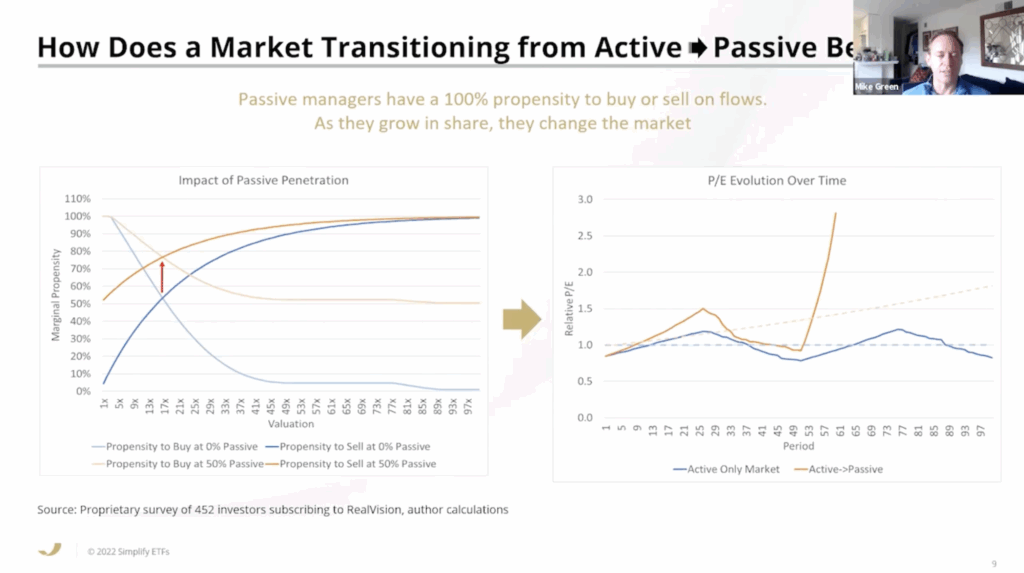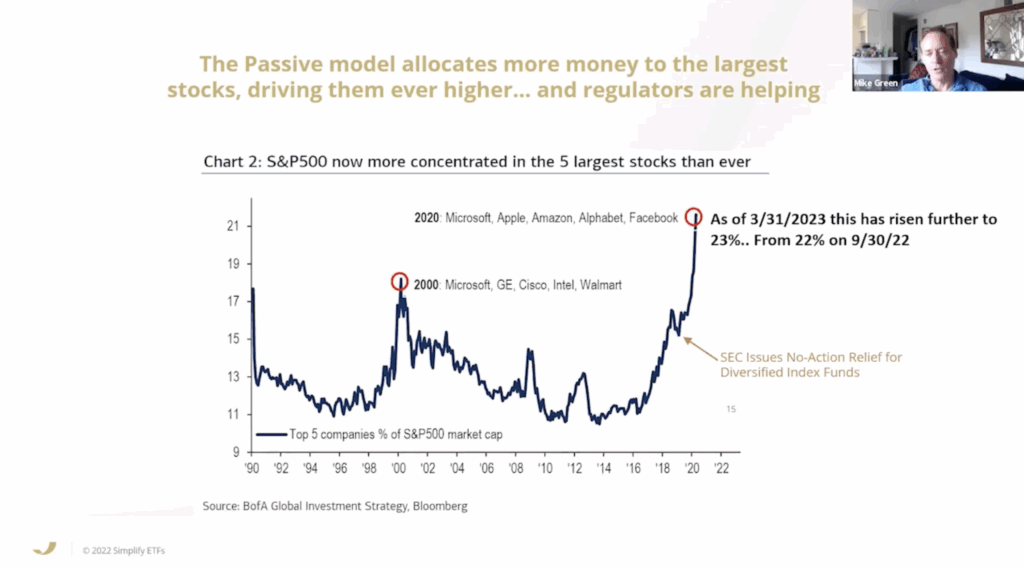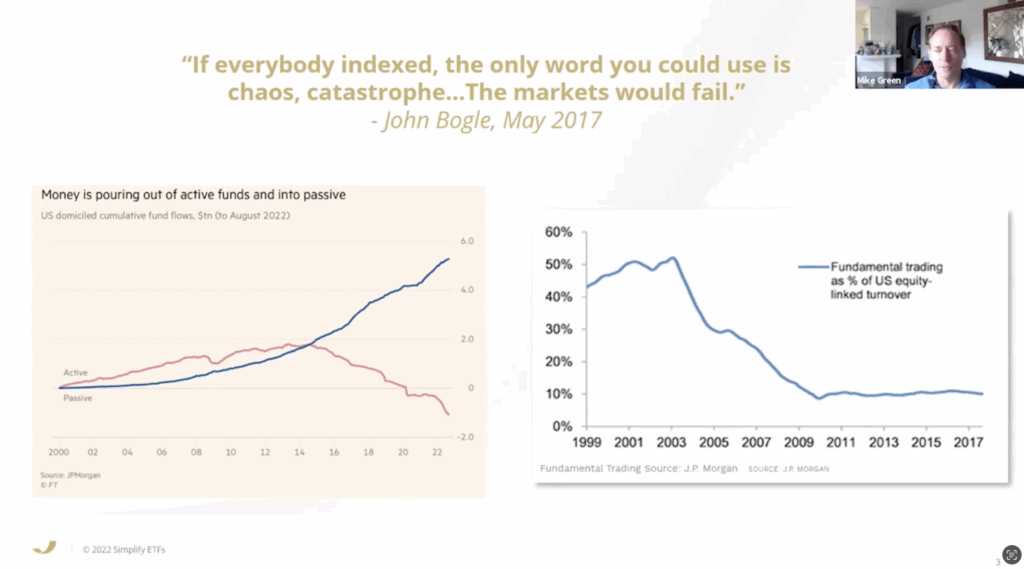I’ve been occupied with the state of passive investing because the message “simply purchase the S&P 500” grew to become the predominant narrative in recent times. This thought was first posed to me by our former GIC chief and Presidential candidate Ng Kok Music a number of years in the past, and I haven’t been capable of shrug it off since.

In my latest journey to Omaha for the 2025 Berkshire Hathaway AGM, I had the fortune to satisfy with many clever traders and thought leaders as we talked about shares and the rising theme of passive traders who merely purchase index funds each month with out considering. Is that this “purchase and neglect” technique sufficient? How do these form the markets, and are they inflicting a much bigger valuation hole for corporations who aren’t within the giant market indices (but)? May the brand new 10X technique be to search out worthwhile small-cap corporations which are quickly rising and put money into them earlier than they get included within the indices?
I spoke with Michael Inexperienced, chief strategist of Simplify Asset Administration on the VALUExBRK convention the day earlier than, who calls passive index investing “The Best Story Ever Offered”. He argues that passive is not passive and is as an alternative the best con ever pulled on traders. The beneath slides are snippets I’ve minimize from an earlier model of his presentation, which may be discovered right here.


The argument that the rise of passive investing not solely distorts the markets, however will result in chaos will not be precisely new, however we lastly have extra statistics to again this speculation up. Curiously, this sentiment was additionally echoed by Warren Buffett in an earlier 1982 letter to shareholders the place he expressed considerations concerning the detachment from underlying enterprise valuations that the rise of index funds may deliver.

Howard Marks additionally wrote a memo on this earlier this 12 months, and I quote some noteworthy sections from it that received me considering:
“The best bubbles normally originate in reference to improvements, principally technological or monetary, they usually initially have an effect on a small group of shares. However typically they prolong to entire markets, because the fervor for a bubble group spreads to every little thing.
In an analogous vein, heated shopping for spurred by the statement that shares had by no means carried out poorly for an extended interval prompted inventory costs to rise to a degree from which they had been destined to just do that.
The S&P 500 declined in 2000, 2001, and 2002 for the primary three-year decline since 1939, in the course of the Nice Melancholy. As a consequence of this poor efficiency, traders abandoned shares en masse, inflicting the S&P 500 to have a cumulative return of zero for the greater than eleven years from the bubble peak in mid-2000 till December 2011.
The purpose is that when shares rise too quick – out of proportion to the expansion within the underlying corporations’ earnings – they’re unlikely to maintain on appreciating. Michael Cembalest has one other chart that makes this level. It reveals that prior to 2 years in the past, there have been solely 4 occasions within the historical past of the S&P 500 when it returned 20% or extra for 2 years in a row. Within the final two years, it’s occurred for the fifth time. The S&P 500 was up 26% in 2023 and 25% in 2024, for one of the best two-year stretch since 1997-98. That brings us to 2025. What lies forward?”
That is an statement I’ve repeatedly expressed on my social media channels. The latest market actions are something however regular. I’m not good sufficient to know all of the solutions, however Howard Marks affords a clue by wanting again into historical past:
“There’s a robust relationship between beginning valuations and subsequent annualized ten-year returns. Greater beginning valuations persistently result in decrease returns, and vice versa.
Right now’s P/E ratio is clearly nicely into the highest decile of observations. In that 27-year interval, when folks purchased the S&P at P/E ratios in keeping with right this moment’s a number of of twenty-two, they all the time earned ten-year returns between plus 2% and minus 2%.”
Sadly, I didn’t get an opportunity to ask Warren Buffett about this in the course of the 2025 Berkshire Hathaway AGM on the microphones, so I believed I’d ask the following greatest individual: Markel’s CEO Tom Gayner. His observe document is impeccable, and he’s an investor whom I significantly respect for each his observe document and life knowledge. His response?
“It’d nicely be that this period we’ve been by (of outperformance by the S&P 500) is perhaps very troublesome for the S&P to maintain up with.
It could look very completely different than what it has achieved within the final 5, 10 or 20 years.
I spend my time to consider every particular person enterprise and may I rely on them to relentlessly compound our capital, and I attempt to think about that as independently to the S&P as I probably can.”
I usually get requested by readers whether or not merely shopping for the S&P 500 each month and doing dollar-cost averaging shall be ample. My stance is fairly clear, and I’ll say this: it’s important to make – and settle for – the choice for your self that may decide your future investing outcomes.
I’ve discovered these memos and insights to be helpful for me, and hope it offers you one thing to consider as you decide on the trail you wish to take along with your cash.
As an investor myself, I don’t consider that the trail to wealth lies in doing what everybody else is doing. I’ve by no means been a believer of merely shopping for the indexes – as an alternative, I favor to search out the highest-quality corporations inside it and purchase them when they’re buying and selling at undervalued costs available on the market.
The S&P500 might have traditionally returned 10 – 11% during the last 40 years, however previous efficiency will not be a assure for future efficiency and there’s no telling how the longer term will appear like.
I’ve little question that many US-listed corporations will proceed to develop and dominate. I’m personally invested in a number of of them – together with Alphabet, Amazon and Palantir. However I purchased them solely at strategic timings, and never by an index fund.
One factor is for certain – my portfolio didn’t cross $1M by shopping for the index each month, and even when I may flip again time to vary my methods and purchase the S&P 500 each month as an alternative, there’s no manner it might have gotten me to $1M both.
In fact, simply because I could not do it with the S&P500 doesn't suggest you may't. In spite of everything, the S&P500 returned 300% good points within the final decade, so anybody who had $330k to start out with then may need yielded a very completely different end result.For the document, I began investing with $20k in 2014. It wasn't till 2017 once I hit $100k, and even when I had the foresight (and guts) to speculate all of it within the S&P500 then, my returns nonetheless would not be wherever near $1M.
As a substitute, I favor to be considerate about what’s extra prone to beat the markets within the long-run. I’d a lot quite comply with the playbook of legendary traders I respect – together with Buffett, Gayner and extra – and put money into undervalued corporations that may compound sooner and better than the market indexes.
Whereas I don’t know the place the S&P500 will go from right here, I shall take heed to Gayner’s recommendation and function “independently of the S&P500”.
How about you guys?
With love,
Daybreak
Price range Babe


